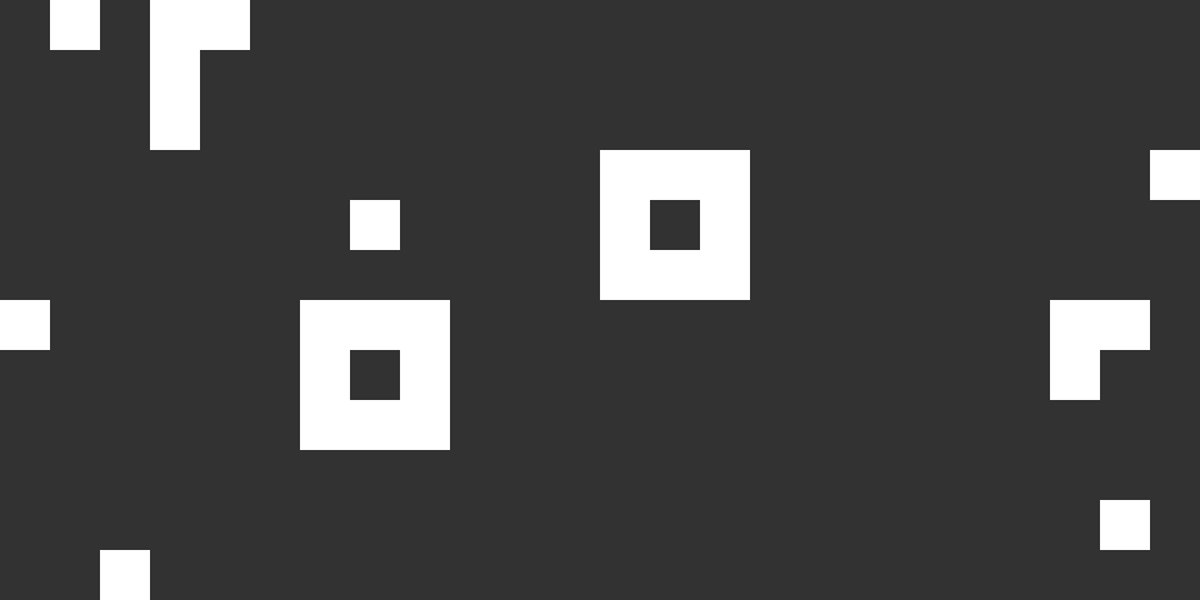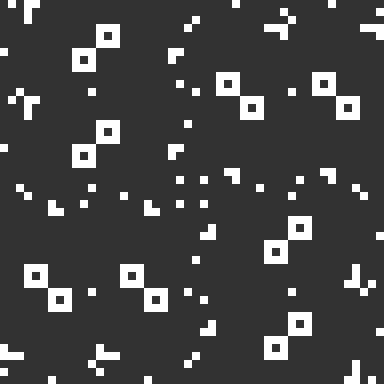Introduction
Sqrstamp is an unique time-stamping system.
The first project of Design in the spring of Foundation Studies was to design a digital clock using Processing.
The following clock is scripted in Java.
The design employs minimalist movements, based on seconds, minute, hour, day, month, and year. Movement is tracked by the motion of the root unit, a white square.

Clock version 1. Time: 2015, March 19, 4:30:29 PM.
Mechanics
The clock is divided into 5 sections:
Year Hour Second Minute Date
As illustrated, the root unit is the white square. The square follows a rigid pathway illustrated by arrows. The small square signify digits between 1-9. If neccesary, the small square will culminate into larger shapes, such as the hollow square in the Seconds and Minute section, or the larger shape in the Date section.
Year:
This section is divided into 4 sub-sections, each representing a digit of the year, all following the same template. Hence the following reads: 2 0 1 5.
Hour:
This section is an arch, subdivided into 12 sub-sections. It represents the hour aspect. A rotated L shape is shown if it is before the half mark of the hour, and a full hollow square is shown else.
Second/Minute:
Both of these sections are subdivided into 6 sub-sections, each counting 10 counts, totaling 60 (seconds/minutes). The small square will complete a rotation one section, then proceed to the next section, the previous section being replaced by a hollow square. Hence the following reads: minute 3 second 29.
Date:
This section is subdivided into 4 sub-sections. The first two sections represents the month, and the lower two represents the date. The first sub-section is empty between months 1-9, and becomes a hollow square to stand for 1 in months 10-12. The third subsection is empty between day 1-9, and is filled first in the top left corner (1x) and then bottom right corner (2x) and last ly the two opposing corners (3x) into a hollow square to signify 1,2,3 respectively. The second and fourth sub-sections fuctions following the Year language. Hence the following reads: 0 3 1 9 (March 19).
Color Scheme:
AM = White (RGB 255) background with Dark (RGB 50) boxes.
PM = Dark (RGB 50) background with White (RGB 255) boxes.

Explanation Map: 2 0 1 5 , 0 3 1 9, 4 , 3 0 , 2 9.
2015 March 19 4:30:29 PM.
Variation and Application
Because each year, month, day, hour, minute, and second is recorded individually, each pattern is unique to the second (assuming color is taken into account, if not, then each pattern shares one duplicate with its AM/PM counterpart).
The clock may be potentially used as a timestamp, incorporated into different patterns. As a clock with an unique and rigid design, working in its own motion language, it can be incorporated into any 2D design as a hidden code.
Below are several different iterations. Each are highly structured and are rotationally symmetrical. It is reminiscent of textiles patterns and other 2D imagery. Possible application in souvenir and timestamping important dates and times (i.e. birthday, anniversaries) onto merchandize. This design has simple aesthetics, but also provides the owner a little privacy and exclusivity to the importance of the timestamp that a numerical timestamp cannot provide.

8 Clock lattice, each clock is repeated once in each direction.

64 clocks (8 nested 8 Clock lattices above). Retains rotational symmetry.

Colored 64 lattice.


